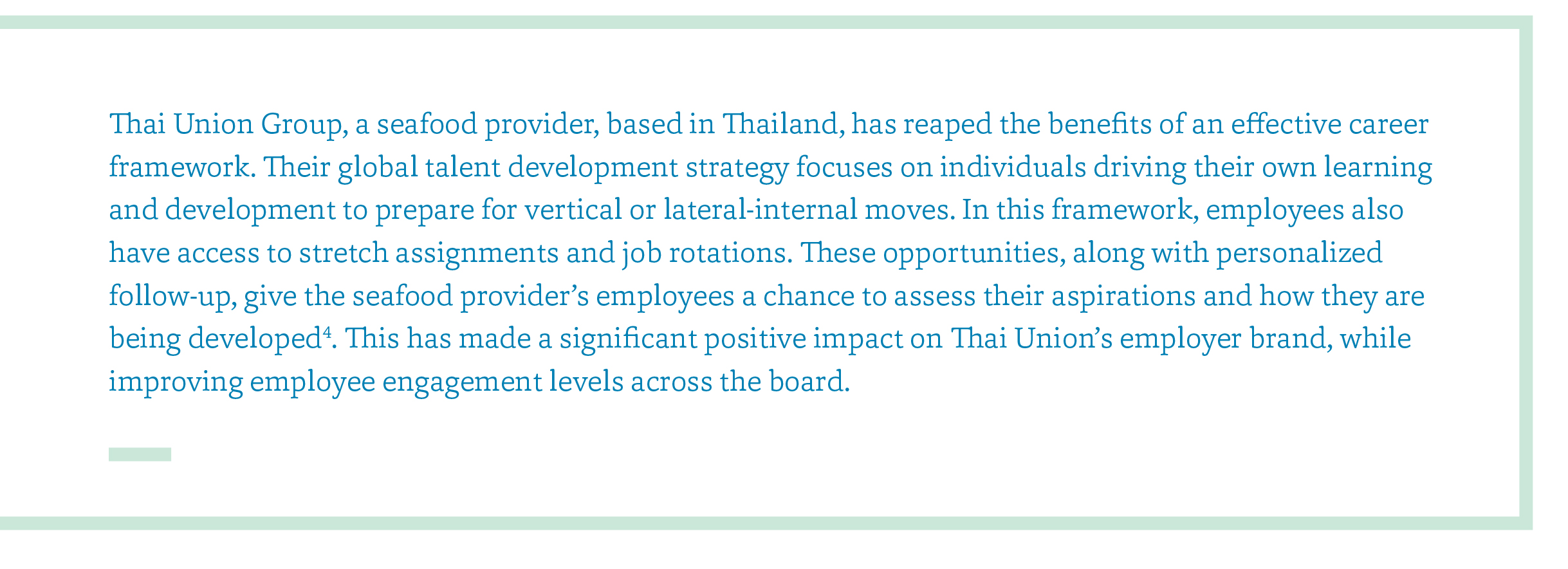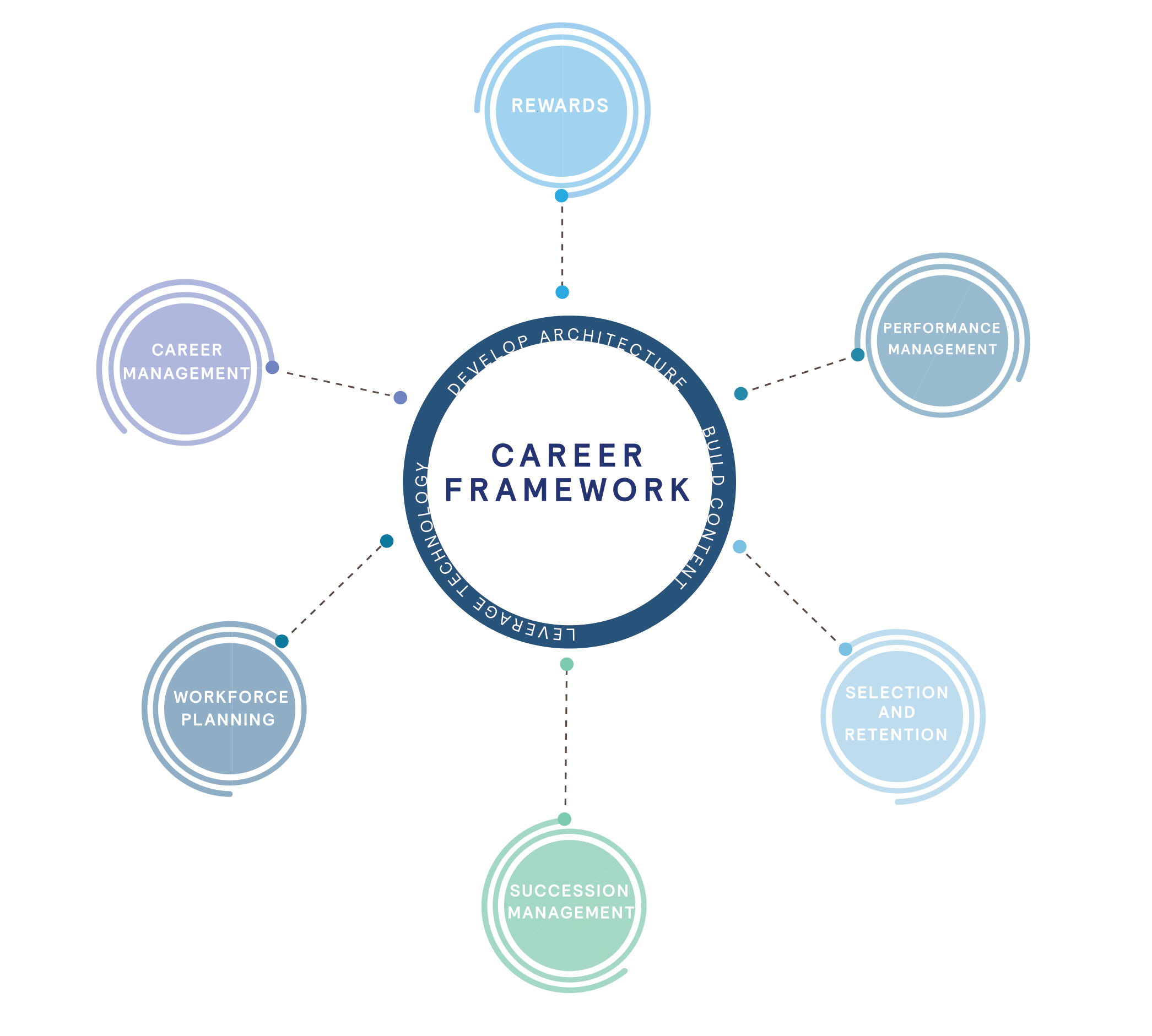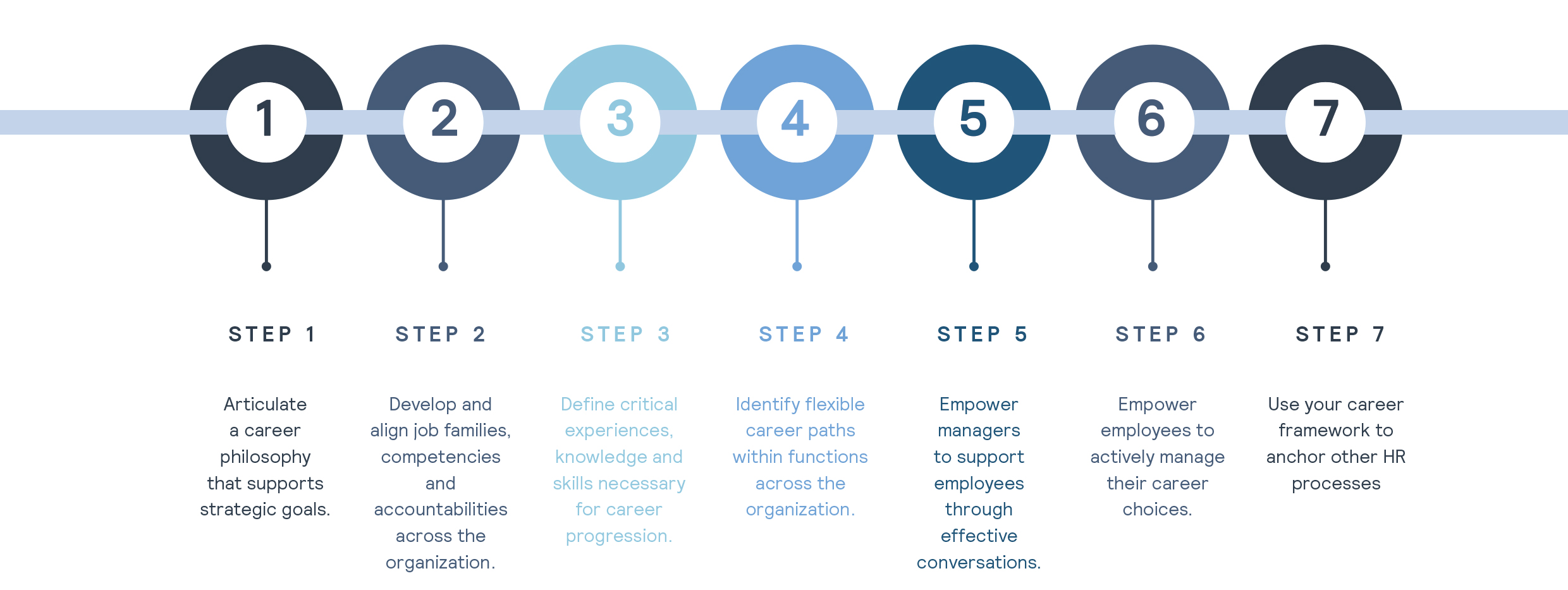“Will your team’s jobs still exist in five years? What are you doing to help them prepare for their next role?”
According to a newly-released Mercer study, Talent Trends 2018[1], more than half of executives believe that at least 20 percent of the roles in their organizations will cease to exist by 2022. What are you doing to ensure your organization has the talent needed to meet evolving business needs? Here’s a hint. Creating a career framework strategy and platform enables core and contingent workers to plug into an organizational structure that matches their evolving skillsets with business needs in real-time.
This aligns with findings from the World Economic Forum’s The Future of Jobs report, where 39 percent of respondents said they support mobility and job rotation,[2] and with findings from Mercer’s Thriving in the Age of Disruption report, where 71 percent of respondents said internal mobility is encouraged.[3] Bridging this gap between intention and action can be done through the development of a thriving environment and clarification of an organization’s career framework strategy.
Engage employees in a thriving organization
Thriving organizations often encompass energy and authenticity, which are core drivers of employee engagement. Studies show employees who feel energized by their projects and comfortable being themselves at work, are 84 percent more likely to express job satisfaction, a desire to stay with their organization, and a willingness to recommend their workplace to others.[3]
Further, thriving organizations tend to have a societal impact, embody a culture of trust and an ethos of virtuousness. These organizations are agile and responsive to external changes and offer clear career paths for employee career growth. In these environments, employees feel engaged, empowered and energized. They feel confident about the future, enthusiastic about their job and their desire to stay at their organization.
Figure 1. If a thriving organization is critical to employee engagement how do you create a thriving organization?

Develop and implement responsive and effective career frameworks
Future-focused leaders identify people who can drive the business forward – even if those people are not in a position of influence today or if their future roles are yet invented. This has implications for jobs, roles, and career planning and capability development. Career frameworks are an aspect of crafting a future-focused people strategy where employees understand that they have an impact on their career path.
Career frameworks first became popular because of the U.S. Army. It was a way to measure soldiers’ progress and success where competencies could be defined as observable behaviors. In the late 1990s, frameworks evolved to mapping competencies to jobs. However, today, good career frameworks focus more on the employee journey than on assessment; they are at the center of people-related processes; are skills-based with a spotlight on driving greater business success; and they generate excitement among employees.
Career frameworks are also becoming flexible and individualized, from both the employee and managerial perspectives. Responsive and effective frameworks allow employees the opportunity to architect their own journey and experiences. On the other hand, managers have insight into their employees’ aspirations. Conversations can go beyond performance-based topics to identify what experiences and competencies employees need to mobilize and grow.
At the macro level, career frameworks also provide organizations feedback and insights. They illustrate what the workforce currently looks like and spotlight what capabilities need to be developed. Additionally, career framework platforms democratize opportunity and information. Fuel50, for example, is an intuitive, customizable and AI-driven solution that delivers career path transparency that is scalable and agile. Fuel50’s CareerDrive tool allows users or employees to invest in and manage their own careers, understand the organizational values and how they can align their careers with the business trajectory and expectations of existing and new roles.

Figure 2. Career Framework

Want to build a responsive and effective career framework? We recommend following these seven steps:

Here are six considerations for building robust career framework for your organization:

Preparing for the future
On a macro level, organizations will need to create a digital infrastructure to support an internal gig economy. This is in line with how workers now contribute skills to projects and teams rather than contributing skills to the company. Individual career management will sometimes be driven by the internal ‘work market’ – where employees bid on projects and serve as internal freelancers. Companies need to provide an infrastructure to support this.
It used to be that competencies enabled a robust career framework, and they defined technical job requirements. Now, the focus is on competencies as building blocks for emerging jobs of the future. According to the World Economic Forum’s Future of Jobs report, by 2020 “more than a third of the desired core skillsets of most occupations will comprise skills that are not considered crucial to the job today.”2 Given this, leaders must focus on how they can help employees build agile competencies. Broader skills will drive higher degrees of individual and company success.
To be competitive in the uncertain future of work, employees will need to be curious. Another coveted trait will be seeking out new information and experiences, parsing through streams of data for relevant insights which require human judgment. Other in-demand skills will be a growth mindset and critical thinking.
With an ever-growing focus on the future, employees are asking how they can equip themselves with the necessary skills to succeed. Employers can and should provide that answer as a way to engage their employees. A thriving workplace and robust career frameworks allow them to do so.
1 Global Talent Trends Study 2018 | Mercer
https://www.mercer.com/our-thinking/career/global-talent-hr-trends.html
2 The Future of Jobs: Employment, Skills and Workforce Strategy for the Fourth Industrial Revolution | World Economic Forum
http://www3.weforum.org/docs/WEF_Future_of_Jobs.pdf
3 Thriving in an Age Of Disruption | Mercer
https://www.mercer.com/our-thinking/thrive/thriving-in-a-disrupted-world.html
4 Career Development Opportunities | Thai Union
www.thaiunion.com/en/careers/career-development-opportunities







